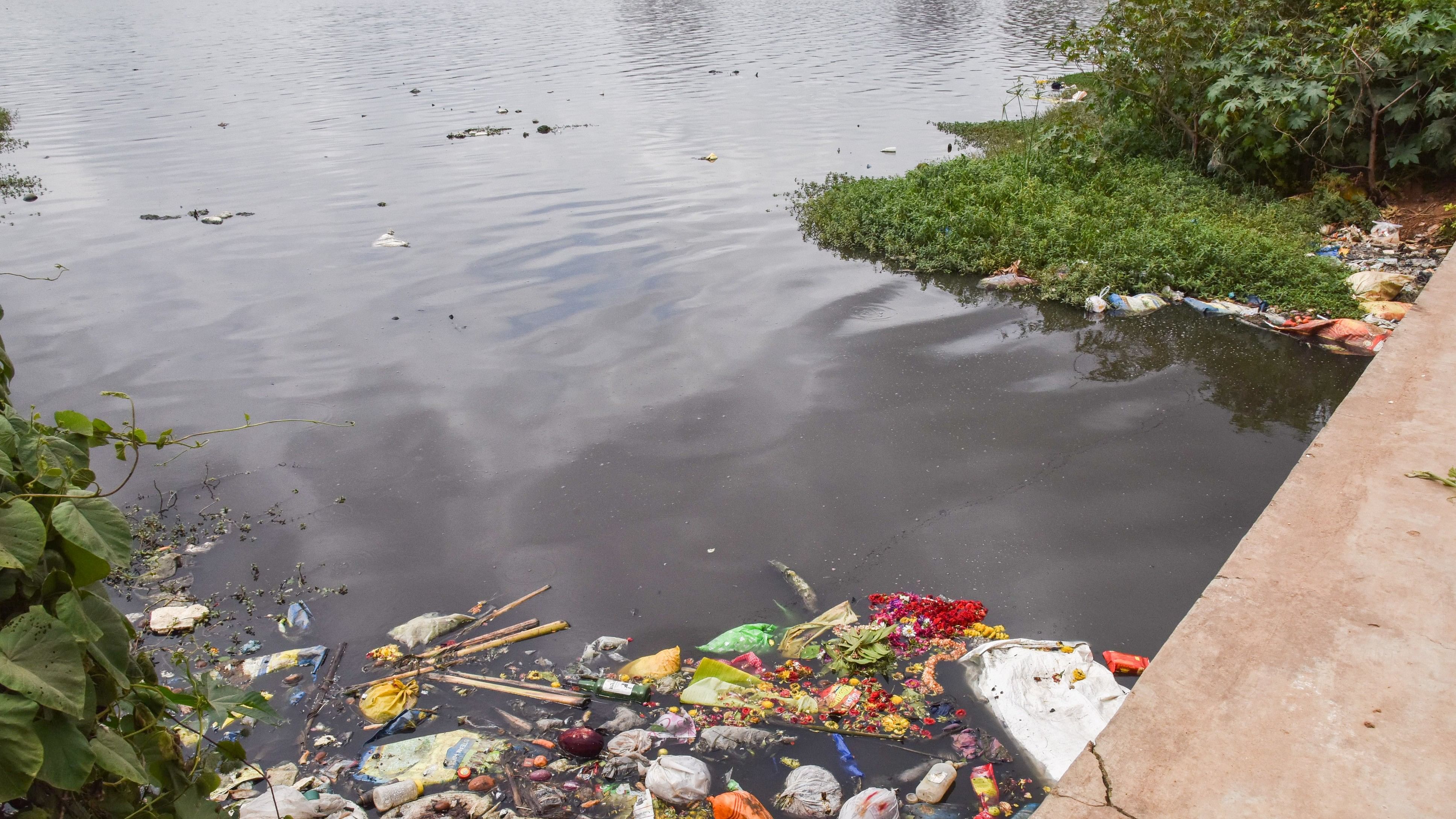
Many lakes within Bengaluru and on the periphery have become harbours for sewage water, sometimes treated, sometimes untreated.
Credit: DH File Photo
Bengaluru: Extensive sand mining activities, disturbed lake beds and indiscriminate pollution have put the lives of many people in the state at risk. Reports of numerous hospitalisations, sicknesses and diseases in Doddaballapur taluk, which is in close proximity to the capital, stand as a testament to this fact.
Many lakes within Bengaluru and on the periphery have become harbours for sewage water, sometimes treated, sometimes untreated. Even though lakes have inbuilt filtration mechanisms, with soil on the lake beds acting to purify suspended and polluting materials, today there is a heightened threat of groundwater contamination due to human intervention.
Today, the survival of Karnataka’s lakes has become more difficult than ever. The state has about 40,000 lakes and close to 10,000 lakes have already disappeared, according to an RTI query. According to a 2022 survey, out of 18,000 lakes surveyed in the state, more than 7,600 were encroached upon. Experts estimate that most water bodies that are adjacent to rapidly urbanising areas are the most polluted.
Residents of around 16 villages in the two gram panchayat limits close to Bashettihalli and Doddaballapur town even decided to boycott the Lok Sabha elections held on Friday to bring focus to the pollution of crucial water bodies.
Since 2022, many residents have been raising alarms about untreated sewage and industrial effluents being directed to the Nagarakere, Majarahosahalli, Veerapura and Doddatumkur lakes. Several lakes fed by the Arkavathi River today face the same fate. Upon the reassurance of the Chikkaballapur district administration to resolve the issue, most locals relented from the boycott.
“Many villagers were unaware that the water from borewells were unfit for drinking. It was only when people started falling sick that they realised,” Vasanth Kumar, a farmer based in Doddaballapur taluk and a member of Doddatumakuru and Majara Hosahalli GP Kere Horata Samithi.
In 2021, the Karnataka State Pollution Control Board (KPSCB) took water samples from 18 borewells from the Doddatumkur grama panchayat. An analysis of the samples showed that seven borewells had water that was unfit to use. In just a span of two years, another round of tests of 18 borewells revealed that 17 were unfit for use.
“Even now many people use the water for irrigation purposes,” he adds. After reports by the KPSCB declared that water was unfit for use, many locals came together to boycott the Assembly elections held last year, demanding clean drinking water.
Taking cognisance of the protest, the district administration agreed to supply drinking water to affected villages from the Jakkalamadagu dam nearby. This would mean a supply of seven to eight tankers daily.
“Supply was only consistent for a few months after the Assembly elections. Now, we are unsure when the next round of tankers will come. This is only a temporary solution,” says Ajay T R, a resident of Doddaballapur town. Left without alternatives, many households rely on filters to purify the water.
Lakebeds disturbed
“In most lakes today, the soil in the lake beds has been disturbed. This makes the permeation of the water quicker. Although this is a benefit to recharging groundwater, it is a huge drawback when the water is polluted,” says N J Devaraja Reddy, a hydrogeologist.
For example, officials from the Doddaballapur City Municipal Council established a pipeline featuring 37 underground drainage machine outlets in the middle of the Nagarakere lakebed. The lake’s inlets also receive untreated sewage from Doddaballapur and neighbouring villages and effluents from nearby industrial parks.
Furthermore, downstream, the Chikkatumakuru lake has been left unprotected, inviting potential encroachment.
Extensive sand mining from the lakebed and the banks of the lake have also disturbed the natural filtration mechanisms. As a consequence, “within one hour, we have observed that polluted water is able to permeate into the groundwater. This is why we are seeing the presence of heavy metals beyond permissible limits in many samples,” explains Reddy.
Presence of heavy metal
In lakes receiving either untreated or treated sewage water, it has been observed that water in surrounding borewells has unusual physical appearance, chemical and biological profiles. “In water taken around lakes that are part of the K C Valley and H N Valley projects, for example, we can observe unusual odour, the presence of several heavy metals and high bacterial content,” he adds.
If lakes are to receive treated sewage water, sewage treatment plants must function at full capacity. Even though Bengaluru has 36 treatment plants, about 24% of the city’s wastewater is left untreated. On the peripheries of the city, rapid urbanisation has occurred in terms of water supply, however, drainage systems are yet to catch up.
Citizens of these areas are often forced to bear the brunt of the mismanagement through a series of failures at the municipality or gram panchayat levels and at the state level. “The boycott would have helped us,” believes Ajay. Ajay lost his brother about one and a half years ago due to cancer. He believes that long-term exposure to heavy metals was the cause. Long-term exposure to heavy metals in drinking water, has been linked to various cancers, including skin, lung, kidney, liver, and gastric cancer “In my village of 1,300 people, there have been at least eight cases of cancer recently. Who will answer this?” he asks.